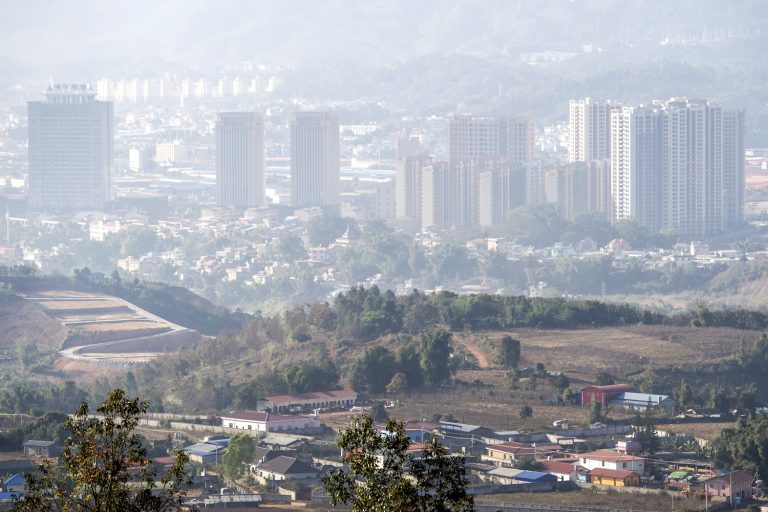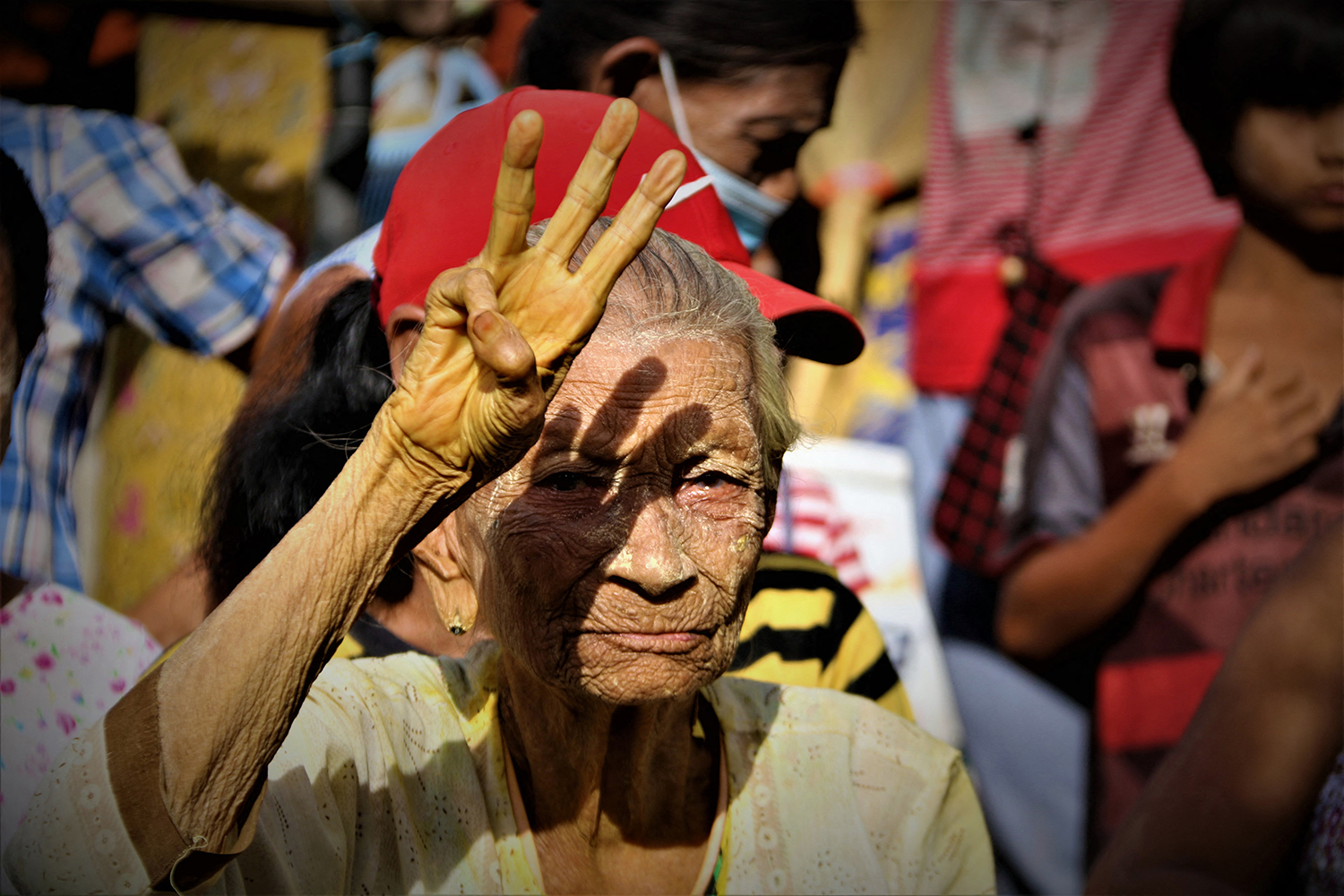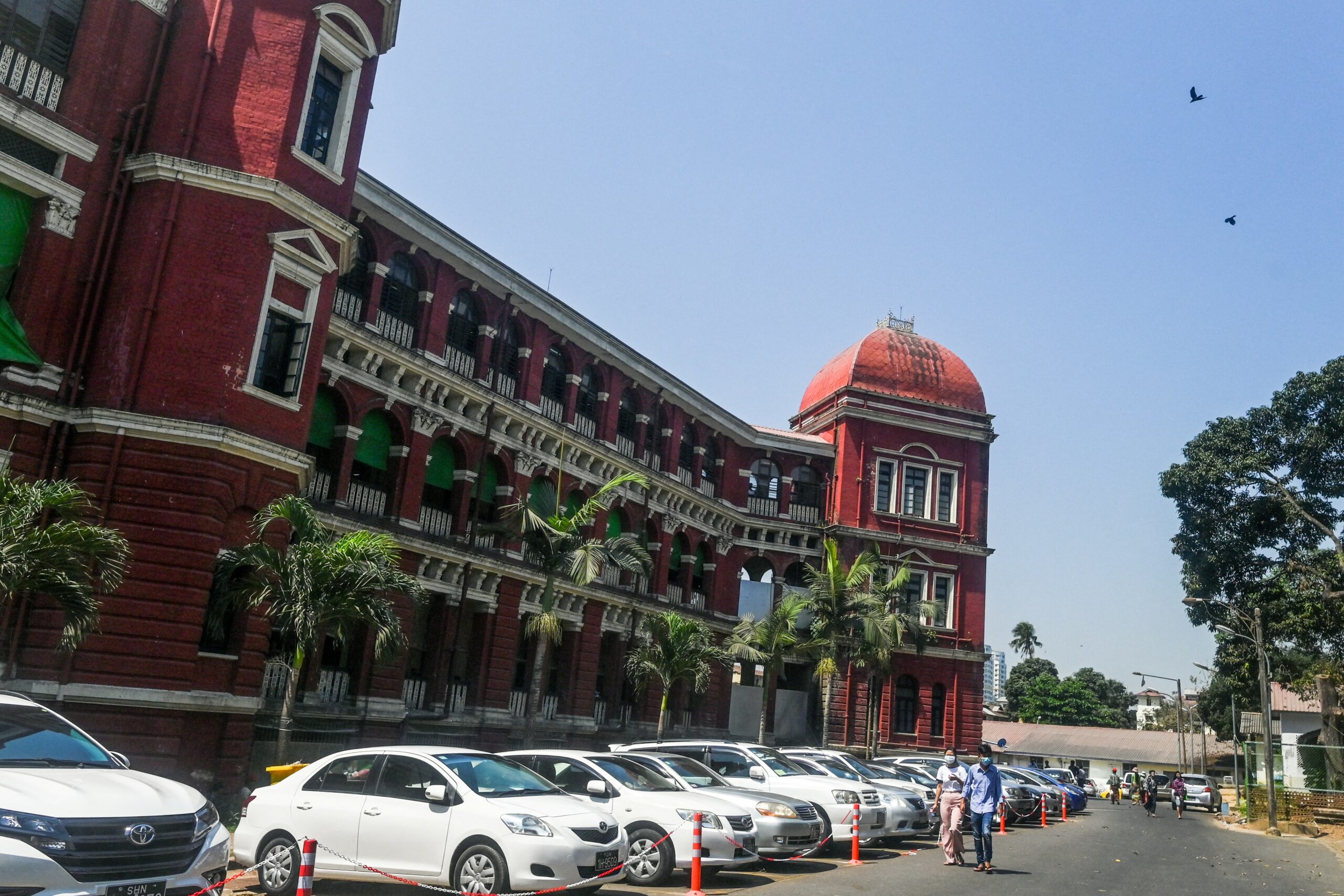Health officials have denied multiplying online reports of people with COVID-19 symptoms being turned away from hospitals, but admit they’re straining to cope with an influx of patients.
By FRONTIER
For a couple weeks in mid-September, Ko Paing Thura Naing, a 23-year-old resident of the Mudita housing complex in Yangon’s Mayangone Township, was unable to taste or smell anything. Assuming it was COVID-19, he contacted the administrative staff at the complex.
On the evening of September 20, they drove him to the nearby North Okkalapa General Hospital to be assessed. But with the hospital’s COVID-19 wing completely full, Paing Thura Naing was turned away
“They wouldn’t admit me,” he told Frontier on September 24. “They asked me to come back later to take a swab test … [and] the [housing] administrator told me to stay in my home.”
Two days later, on September 22, the hospital called him back and admitted him to its quarantine facility. On September 24 staff gave him a swab test – weeks after his symptoms first presented and four days after he reported them to officials. On September 25, the results came back positive. The hospital transferred him to a treatment facility in Hlaing Township, where he remains.
On Facebook, people across Myanmar have increasingly been reporting that they’re being turned away from hospitals with COVID-19-like symptoms – particularly the loss of taste and smell – because hospitals are overwhelmed with patients and people under investigation for having the disease, known as PUIs.
A PUI is typically a person who has COVID-19-like symptoms, has been in close contact with a confirmed case or has been to a place where there is an outbreak. For most of this pandemic, Myanmar has been dealing largely with the latter two categories, as its number of asymptomatic patients has been unusually high relative to other countries.
But, well into the “second wave” that began in August, the number of symptomatic, and fatal, cases has increased rapidly in tandem with the overall case count. For seemingly inexplicable reasons, the loss of taste and smell seem to be the most common symptoms. Before being transferred, Paing Thura Naing told Frontier he’d seen between five and 10 people enter the hospital’s isolation ward a day reporting the loss of their sense of taste or smell.
Doctors from Yangon’s local “fever clinics” and officials from government hospitals told Frontier that since about September 20 the number of patients visiting their facilities and claiming to have COVID-19 symptoms has been rising each day.
“At least 40 of the 50-plus patients we saw today came with COVID-19-related symptoms. These patients comprise about four-fifths of our total visitors on any given day”, Dr Kyaw Minn Tun, who heads the Yangon Fever Clinics Network and runs the fever clinic in Tarmwe Township, told Frontier on September 24.
The fever clinics were set up in Yangon in April to ease the burden on hospitals. They have been checking people who have symptoms of COVID-19 and referring suspected cases to hospitals and other testing and quarantine sites. Under a new pilot programme, some of these clinics have begun collecting test samples on site and sending them to the National Health Laboratory in Yangon.
Kyaw Minn Tun said the primary symptom people are visiting her clinic with is the loss of smell, and that on average about 50pc of the patients being tested at her clinic are turning up positive for COVID-19.
On September 14, 24 of the 30 tests the fever clinic in Insein Township collected – or 80pc – came back positive. On September 21, 21 of the 36 – nearly 60pc – were positive.
During the first week of October, the Ministry of Health and Sports for the first time released numbers on tests it had processed specifically from people who reported the loss of their sense of smell. Between October 2 and 5, 826 of the 4,398 tests – or about 18.8pc – came out positive. That was just a few percentage points above the national positive test rate, which on October 5 was 15pc.
This surge in people self-reporting symptoms is overwhelming the limited capacity of the healthcare system, and the problem is particularly acute in Yangon, where the majority of cases are clustered.
On September 26, the Yangon Fever Clinic Network closed its North Okkalapa clinic because the township hospital’s COVID-19 wing was completely full, and the clinic had nowhere to refer patients. It didn’t reopen until October 5.
Dr Khin Khin Gyi, director of the Ministry of Health and Sport’s Central Epidemiology Unit, told Frontier that, as of September 23, when the data was last updated, the rate of asymptomatic cases in Myanmar was between 65pc and 70pc. This has been consistently higher than most countries – it is around 40pc in the US, according to the Centers for Disease Control and Prevention – but testing has also been more widespread in most other countries.
For comparison, for every 1,000 Singaporeans, the Singapore government has tested slightly more than 493 people; in Myanmar, that number is about six. That’s after the government ramped up testing during the first weekend of October with new antigen rapid test kits.
Capacity crunch
The four major government hospitals in the city – Yangon General, Insein, Thingangyun Sanpya and Yangon Western – currently each have between 60 and 100 isolation beds, but they are dedicated to treating confirmed COVID-19 patients.
Khin Khin Gyi told Frontier that, for now, hospital officials are logging patients with mild symptoms by name, age and residence and following up with them.
“We won’t hospitalise patients with mild or manageable symptoms. We tell them to stay at home and isolate”, she said.
Dr Maw Maw Oo, head of the Emergency Department at Yangon General Hospital, said between 150 and 160 patients a day were visiting his hospital reporting symptoms. He admitted the hospitals are strained but denied anecdotes on Facebook that suspected COVID-19 patients are being turned away.
“Any patient who shows up with COVID-19 symptoms is admitted to hospitals. We accept all such patients”, he said.
While this seemed to contradict Khin Khin Gyi’s version of events, he added, “But hospitals do not accept people just because they assume they have the disease because they’ve lost their sense of smell. We make an appointment for them to return [for a more thorough screening].”
In addition to temperature checks, official screening guidelines from the health ministry include respiratory tests and blood oxygen and pressure readings.
He urged anyone who suspects they have COVID-19 to go to their nearest township hospital to reduce the burden on the city’s major government hospitals.
Dr Zaw Wai Soe, vice-chair of the Yangon Region COVID-19 Prevention, Control and Treatment Coordination Committee, said health authorities are trying to build new facilities for PUIs near government hospitals in collaboration with the regional government.
He admitted hospitals were struggling to accommodate an increasing number of PUIs generally.
“Accommodation for PUIs is being created at the nursing training school and at Latha High School No. 2 near Yangon General Hospital, and at the Shwe Pauk Kan football field in North Okkalapa Township”, near that hospital, he told Frontier on September 24.
Frontier was unable to find signs of progress on this plan since first speaking with Zaw Wai Soe.
He also mentioned plans to expand a treatment centre specifically for those who’ve lost their sense of smell in the Yoma Housing complex in Dagon Seikkan Township. As of September 26, that facility, which had already been accommodating more than 500 PUIs, had increased its capacity to 1,000, Zaw Wai Soe said.
Additionally, Yangon Eastern, Thanlyin, Yangon Orthopedic, Central Women’s, and the Dala and Twante township hospitals have between 20 and 50 isolation beds each. The Dala amd Twante hospitals are working with township administrators to create new quarantine centres for PUIs nearby.
A 400-plus-bed facility was built by the Ayeyarwady Foundation in September at Yangon’s Thuwanna Youth Training Centre, but it is being used exclusively to treat confirmed COVID-19 cases. The same is true for two private donor-funded, 500-bed treatment centres in Thaketa and Mayangone townships.
The regional government said it had opened 82 new PUI isolation centres across the city in the first week of October, each with a capacity of between 30 and 50 patients.
In the last week of September, fever clinics in Insein, Tarmwe, South Okkalapa, Hlaing Tharyar and Yankin townships also opened their own isolation centres, each with the ability to house about 50 PUIs, according to Kyaw Min Tun.
Private hospitals remain on the outside
The health ministry has ordered private hospitals and clinics not to receive any suspected COVID-19 patients, but to instead transfer them to government hospitals that the ministry designated as COVID-19 treatment facilities in January.
Several large private hospitals over the last several weeks have issued statements pledging to comply with the orders. Many are afraid they’ll be unable to properly isolate PUIs or confirmed cases and thereby endanger the health of their current patients.
The Grand Hanthar International Hospital in Kamaryut Township said in a statement on September 20 that it was not admitting suspected COVID-19 patients and that it was checking for symptoms before allowing anyone entrance. Anyone with potential symptoms of the disease is being referred to the designated government hospitals.
The day before, the Asia Royal Hospital in Sanchaung Township also said it is not accepting COVID-19-suspected patients in order to keep safe patients that are currently seeking non-COVID-19-related medical care there.
On September 16 the Ar Yu International Hospital said its nursery would not accept newborns with fever or neonatal sepsis – which has symptoms similar to COVID-19 – if they were born outside the hospital.
Health ministry spokesperson Than Naing Soe said the ministry is worried private hospitals do not have the proper equipment or training to handle infectious diseases.
“They need standardised guidelines to treat COVID-19 patients”, he said. “The Yangon Region COVID-19 committee and the Myanmar Private Hospitals Association are in discussions about opening private hospitals to COVID-19 patients if they can match our guidelines.”
With the government just starting to ramp up testing, the number of confirmed cases will surely increase in the coming days and weeks. Public or private, hospitals are going to have to find a way to treat more and more potentially infectious patients one way or the other.
“This need will continue to grow”, said Than Naing Soe.







